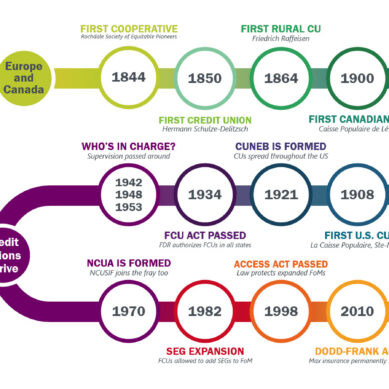How to Avoid Surrogation Turning Good Intentions Into Disaster
Using metrics to track business performance has become not just common practice, but a necessity in today’s business world. As Data Analyst Thomas Hull explained, incorporating key performance indicators into your business planning can help ensure your teams stay focused on your key business objectives.
And while this is sound advice, unbridled enthusiasm for the metrics can pervert those original objectives into something you never intended them to be.
Strategy can often seem nebulous. The concepts might make sense, but to really grasp whether we’re succeeding, we assign them more structure in the form of metrics. “Improve quality” could mean any number of things. One way we might seek to track and achieve that goal is reducing the number of complaints. Now we have an easy-to-track metric to determine whether we’re succeeding in our business strategy.
This is where surrogation sets in. Or in other words, the tendency in businesses for the metric to replace the strategy they’re meant to track.
A classic example is the company that seeks to “improve customer satisfaction” and sets to tracking customer satisfaction survey results as the means of judging that objective. While the intentions might be to improve member service which will lead to higher scores, over time the scores themselves become the goal. Before you know it, staff is discarding poor survey results or falsifying them to be higher, actually resulting in worse customer satisfaction.
Millions of unauthorized accounts
Perhaps the most infamous example of surrogation rests with Wells Fargo. In 2016, it was revealed that millions of deposit accounts had been opened without authorization from the owners. Almost a year later, further investigation had found as many as 3.5 million potentially fake bank and credit card accounts.
Not only would Wells Fargo pay billions in reimbursed fees, lawsuit damages, and fines from the CFPB and OCC, but the company would also suffer severe damage to its reputation and ability to attract new customers. In April 2017, Wells Fargo reported that “first-quarter credit card applications were down 42% year over year, with new checking-account openings down 35%.”
How could this have happened? Subsequent examination of the disaster would find that Wells Fargo had a strategy of developing long-term customer relationships, and to track that goal, they used cross-selling metrics. Or as written in its third quarter 2016 earnings report, they sought to “best align our cross-sell metric with our strategic focus of long-term retail banking relationships.”
Pressure to meet the metric, not the strategy
To be clear, there’s nothing wrong with this goal. Many credit unions have stated goals of improving their long-term relationships with members. And many will find some way of tracking that abstract goal through KPIs and data.
The devil lies in the way the metrics will over time supersede the original goal. In Wells Fargo’s case, incentive-based compensation practices and pressure from on high lead to staff seeking to beef their stats by any means available.
If incentives were the carrot to increase cross-sales, sales quotas and the pressure to meet them were the stick. In its Sales Practice Investigation Report, Wells Fargo stated it was “the distortion of the Community Bank’s sales culture and performance management system, which, when combined with aggressive sales management, created pressure on employees to sell unwanted or unneeded products to customers and, in some cases, to open unauthorized accounts.”
Combine this with a decentralized corporate structure which made monitoring and reporting the scale of the issue difficult, and Wells Fargo would find itself in deep.
Metrics are not the enemy, your strategy might be though
In the case of Wells Fargo and the classic scenario, the data was concrete enough to replace the original goal. As Harvard Business Review would summarize the situation at Wells Fargo: “The real source of Wells Fargo’s problems was measurement. When the bank decided to actively track daily cross-sales numbers, employees rationally responded by working to maximize them. Throw in financial incentives, a permissive culture, and intense demands for performance, and they might even illegally open some unauthorized accounts, all in the name of advancing the “strategy” of cross-selling.”
It’s easy to look at the metrics and point the finger. After all, it’s the blind drive to improve those metrics that create the issue, right?
Not entirely. Renowned behavioral economist Daniel Kahneman (author of Thinking Fast and Slow) and Yale professor Shane Frederick suggest that surrogation is caused when 1) the strategy is abstract; 2) the metric is concrete; and 3) the employee substitutes the metric for the strategy.
It starts with the strategy. By working to improve the strategies from the beginning, we can reduce the opportunities for the metrics to replace them as the end goal. When designing the strategy and objectives, make sure you fully understand the work that will be involved in achieving them. Better yet, get those who will be doing the work involved. Their involvement will help them to better understand what they need to do and why.
Keep a close eye on incentive-based programs
This is probably a no brainer, but where incentives exist, so too do the opportunities to cook the stats to improve results, possibly to the detriment of the actual strategy.
While at an event involving credit unions CEOs, a big focus of discussion was whether each was offering incentives for cross-selling at their respective institutions. As I sat back and listened, they mostly wanted to hear what they were offering, but not how they were tracking or monitoring it.
Though none of those credit unions is as big as a Wells Fargo, where the distance between the boots on the floor and upper management was a contributing factor in the resulting fiasco, credit unions can sometimes themselves be surprised by what’s going on directly under their noses (see: any one of the recent examples of embezzlement, such as at CBS Employees FCU).
If you do find yourself implementing incentive programs to encourage growth in a certain area, make sure you are doing your due diligence to prevent the metrics running away with the goal.
Putting the monster to work for you
In Mary Shelley’s classic Frankenstein, the titular character is a brash, arrogant young man who believes his exceptional skills can conquer even life itself. And in some ways, he’s right. He succeeds in creating life from nothing.
Upon completing his project though, he’s not confronted with triumph, but horror. Frankenstein had succeeded in creating a monster.
Closer examination might have found that his “monster” wasn’t as terrible as he first assumed. But much the same as the metrics we set, the innocence of monster and metric alike is compromised through the neglect and abuse of its creator.
Hopefully I have not driven into you a fear of incorporating KPIs into your business strategies. Rather, we must be more intentional and inclusive in our strategic planning. As Hull mentions, incorporating S.M.A.R.T. (Specific, Measurable, Achievable, Relevant, and Timebound) can be a great boon to your organization.
When working on your business plan, avoid the temptation to include those oft meaningless (or at the very least confusing) strategies like “improving member engagement” and “increasing customer satisfaction.” These should be the unstated outcomes of the concrete strategies you establish. Otherwise you run the risk of the metric you dream up to achieve that well-intentioned goal turning into the goal, and the monster coming back to wreak terrible revenge.
-
As a supervising editor of CUSO Magazine, Esteban reviews and edits submissions, assists in the development of the publishing calendar, and performs his own research and writing. His experience provides CUSO Mag with a seasoned writer and content curator, able to provide valuable input to contributors, correspondents, and freelance journalists.
Esteban has worked at CU*Answers since 2008 and currently serves as the CUSO's content marketing manager.
View all posts
























































chip+filson#1
when everything is a number, everything has a price–a saying.